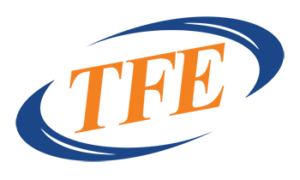How to obtain E-rate funding for your classroom
Technology in the classroom helps create a more engaging and effective learning environment. Many educators and learning institutions now incorporate digital learning styles and resources in their curriculum. According to the 2019 Common Sense Census, 80 percent of K-12 teachers have computing devices in classrooms, while in some cases, both students and teachers bring their own devices to school.
E-learning is not just a fleeting trend. It has proven time and again to be an efficient teaching and learning method that cuts learning time, organizes information, and keeps students stimulated and engaged. For that reason, the Federal Communications Commission (FCC) began the E-Rate program to make e-learning resources available to all schools and students.
How does the E-Rate program work?
The E-Rate program began in 1996 to fund or discount telecommunications investments in schools and libraries. Later in 2014, the FCC updated the program to focus more on internet access due to the rising demand for high-speed internet connections in learning institutions and high-performance technology in the classroom.
Under the FCC’s Universal Service Fund, eligible schools and libraries may receive discounts on telecommunications infrastructures under these four sponsorship categories:
- Telecommunications services and internet access
- Internal connections
- Managed internal broadband services
- Maintenance of internal connections
Benefits of E-Rate funding
E-Rate aims to equalize technology and information access for all learners across the country. The discount ranges between 20 and 90 percent, depending on the recipient institution. Signing up for the program is a great way to advance e-learning and technology in the classroom. You can easily make affordable upgrades to your school’s IT infrastructure to enhance the teaching-learning experience and keep up with other schools.
The E-Rate discount can enable your institution to access robust internet connectivity and information transmission systems that are otherwise out of reach of your school’s IT budget.
How to apply for E-Rate
All K-12 institutions, including private and religious schools, are eligible for E-Rate as long as they are non-profit and have an endowment of less than $50 million. Applying for E-Rate is usually a year-round process that may require you to fill out applications or follow up paperwork for several years simultaneously.
Generally, the application starts with a competitive bidding process. Fill out Form 470, which opens the bidding process, with a proposal of the services or equipment your school needs. It takes 28 days for the Universal Service Administrative Company (USAC) to review the bids. After that, you have to submit Form 471 and vendor contracts detailing the specifics of the hardware or services requested in the proposal. The application then goes under intensive scrutiny in the Program Integrity Assurance (PIA) process.
After approval, the USAC issues a funding commitment for your project. You can either pay the vendor or ISP in full and claim reimbursement or pay the vendor a discounted bill and let them claim a top-up. Either way, you have to invoice the USAC once the purchase is made to get your discount.
Why E-Rate is Important
E-Rate funding is the FCC’s way of bringing technology in the classroom through affordable access to information. A stable high-speed internet connection plays a fundamental role in modern learning and school information management. According to FCC’s Broadband Deployment Report, 21.3 million Americans lack access to broadband internet – other studies state much higher figures. But the point is, many American homes don’t have a high-speed internet connection. And given that learning is quickly shifting to digital platforms, that puts millions of learners at a crippling disadvantage.
The E-Rate program is a thoughtful way to close the internet access gap among learners. Check your institution’s eligibility for E-Rate funding and follow the due process to bring digital learning closer to your students.










